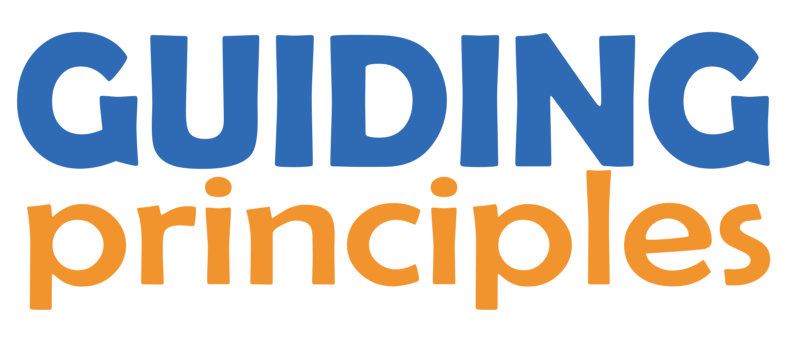|
Defining, Determining and Maintaining Best Practices within Our Force Free Organization. The PPG Best Practice document supports our Guiding Principles, at PPG we encourage professional autonomy within the confines of our mutually agreed principles.
Written by Debra Milikan, Dip.ABST, Dip.DTBC, PABC Copyright 2012 First printed in “Barks from the Guild” the official quarterly publication of the Pet Professional Guild. The question of how one defines determines and maintains best practice is one that troubles individuals, organisations and professions alike. In the fledgling, unregulated industry of animal training, the Pet Professional Guild (PPG) has worked in conjunction with James O’Heare (President of the Companion Animal Sciences Institute and Director of the Association of Animal Behaviour Professionals) to deliver to its members a guided delivery system for best practice. Definitions of best practice vary with information sought. Some definitions are purely result driven “Methods and techniques that have consistently shown results superior to those achieved with other means and which are used as benchmarks to strive for”1 whilst others take a wider view of the subject. A process, method, technique or activity that conventional wisdom considers to be “…more effective at delivering a particular outcome than any other technique, method, process etc. when applied to a particular condition or circumstance. The idea is that with proper processes, checks, and testing, a desired outcome can be delivered with fewer problems and unforeseen complications...A given best practice is only applicable to particular condition or circumstance and may have to be modified or adapted for similar circumstances. In addition, a “best” practice can evolve to become better as improvements are discovered.”2 The “particular condition or circumstance” to which animal trainers desire to establish best practice is training animals thus modifying their behavior. Friedman3 suggests that a standard needs to be set to determine procedures for behavioural change. She states “Without such a standard, we are likely to intervene on the basis of effectiveness alone, without due consideration of humaneness. To be maximally humane, our interventions should be as un-intrusive for the learner as possible and still be effective.”3 Carter & Wheeler4 cite Alberto and Troutman’s four level intervention hierarchy where Level l interventions such as differential positive reinforcement schedules are considered “…to be the most socially acceptable while maintaining the highest amount of counter control for the participant (i.e., least intrusive)”4. This hierarchy proceeds to Level II which includes “…extinction procedures which involve terminating reinforcement that was previously available to the student.”4 Level III interventions include time out procedures (“…denying a student the opportunity to receive reinforcement for a fixed period of time”4) and response-cost procedures (“…removing specific amounts of reinforcement contingent on problem behaviour”4). Level IV, the most intrusive of the levels, includes unconditioned aversive stimuli, presentation of stimuli which causes pain, conditioned aversive stimuli and overcorrection procedures. Friedman3 agrees with Carter and Wheeler4 that social acceptability is an important component of compliance with an intervention and also that “…the degree to which the learner maintains control while the intervention is in effect”3 is of importance. She believes that considering the continuum of learner control is “…essential to developing a standard of humane, effective practice”3. She goes on to say that “Research demonstrates that to the greatest extent possible all animals should be empowered to use their behavior to control significant events in their lives, i.e. to use their behavior effectively to accomplish a desired outcome.”3 (Empowerment Training - Conditioning for General Behavioral Well-Being in Companion Animals by James O’Heare (2011) is a modern effective guide to empowerment training.) Intervention hierarchies that are both ethical and feasible to implement would be “…in the best interests of captive animals, their caregivers and the professionals working with them to solve behavior problems” (Friedman3). Further, Friedman says that by choosing the “…least intrusive, effective procedures (i.e. positive reinforcement-based and empowering) we increase the humaneness of our interventions without compromising our learning objectives.”3 To this end Friedman also developed a hierarchy of behaviour change procedures using the most positive, least intrusive effective criteria.3 O’Heare5 has also refined a behaviour intervention model that the PPG will use to determine the least intrusive methods by which an animal should be trained. O’Heare5 states “Questions such as whether to use aversive stimulation, under what conditions and how to choose what form it will take in a behavior change program are always about weighing the likely benefits and the likely risks of the intervention in question, in the context in question.” He, like Friedman, agrees that “…effectiveness is not sufficient to justify highly intrusive interventions.”5 In order to fulfil his statement that “…it is important to remember that, because we are committed to “do no harm”, we are ethically obliged to ensure we choose the options that are the least intrusive possible”,5 O’Heare offers the following table.
Fig. 1 Least Intrusive Effective Behavior Intervention (LIEBI) Algorithm and Levels of Intrusiveness Table - used with permission of the author The Pet Professional Guild As members of PPG and in accordance with our Guiding Principles “Members understand Force-Free to mean, no shock, no pain, no fear, no physical force, no compulsion based methods are employed to train or care for a pet” It is also the belief that experienced trainers must begin their behavior change programs with the least invasive and least aversive training protocols necessary to change the problematic behavior. Education is one of the key goals of PPG so its members have access to resources and thus training tools that meet the needs of their clients in line with the Guilds Guiding Principles. Our future provisional member mentor programs will enable less experienced trainers to learn these training techniques and broaden their tool-kits. Allowing Professional Autonomy A professional must be allowed autonomy to work within the guidelines of his/her professional code of practice. PPG members are encouraged to use their individual methods of choice from within governing principles and guidelines. As a governing body, the PPG endeavours to choose well researched methods that are least intrusive and most effective in its information to members. Together with the LIEBI model, PPG members can further determine the intrusiveness of their interactions with animals by considering the following, taken from Bailey & Burch6. According Dignity Regarding human learners, Bailey and Burch6 explain, “Many of the clients that we serve are not able to effectively represent themselves. They may be nonverbal or simply unable to get someone to listen to them. If their wishes are unk nown and they are unable to make choices, they may become depressed and present behavior problems…”6. This statement can also be used to guide direction for animal training methods. Methods should allow choices that can be positively reinforced, further empowering the animal to progress. Treating Others with Caring and Compassion “If, as a behavior analyst (here read animal trainer), you respect the autonomy of clients (both human and non-human), work to benefit them, and devise programs that accord them dignity, you will automatically be treating clients with care and compassion” 6. PPG members should actively factor this into method development and use. Respecting Autonomy “To respect one’s autonomy means to promote his or her independence or self-sufficiency”5. Bailey and Burch say that “…prompting, shaping, chaining, fading and the use of conditioned reinforcers”6 aid self-empowerment but should be used judiciously to ensure safety at all times. Although their book relates to human application of behaviour analysis, the same principle can be applied to animal training. Maintenance of Best Practice Without a prescribed method of determining best practice an organisation will flounder and/or diminish. A willingness to adhere to the intervention model and principles stated above, with regular oversight by our caring, well-versed governors, the PPG will help guide animal trainers to maintain a standard of humane, effective best practice. This too will evolve with experience, like the behaviour of the animals we teach!
Bibliography
|


